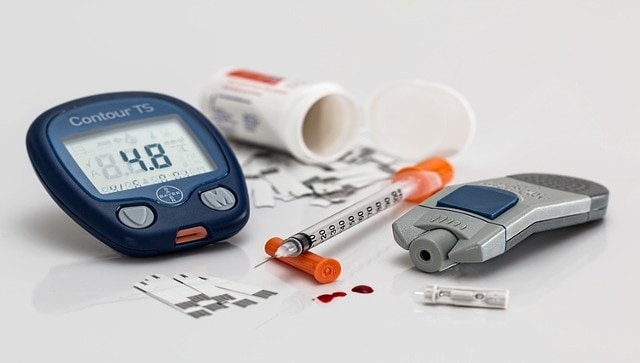Chinese scientists claimed to have cured a type 1 diabetes patient using cell transplants in what was stated to be the first such case in the world.
The 25-year-old patient, who had the chronic condition for over a decade, was able to naturally regulate her blood sugar some 2.5 months after undergoing the minimally invasive surgery, Shanghai-based news outlet The Paper reported on Saturday.
The team behind the breakthrough published their findings in the peer-reviewed journal Cell last week.
Here’s all we know about this.
The new treatment
The young woman from China’s Tianjin was diagnosed with type 1 diabetes 11 years ago and had already undergone two liver transplants and one unsuccessful pancreatic islet cell transplant.
Researchers from Tianjin First Central Hospital and Peking University received official approval for the clinical research in June last year and subsequently carried out the transplant on their first patient.
The report claimed that the treatment involved using “chemically induced pluripotent stem-cell-derived islets” or CiPSC islets.
To do this, the researchers first collected adipose tissue cells from the patient and used small molecule chemicals to reprogramme these cells into pluripotent stem cells.
These cells were then transformed into islet cells and injected into the abdominal muscles, a new site for this kind of procedure.
Stem cells are unique cells capable of self-renewal and differentiation into various specialised cell types for tissue repair. Because these pancreatic cells originated from the patient, there was no immune rejection.
The injection was minimally invasive, the shallow site facilitated imaging monitoring, and the cells should be retrieved anytime if needed.
Results
Following the CiPSC islet transplant, the patient’s fasting blood glucose levels gradually normalised, and her dependence on
external insulin steadily decreased.
She completely stopped needing insulin injections 75 days after the procedure. According to the South China Morning Postthe improvement has lasted for over a year.
Earlier, the woman used to experience significant swings in blood sugar levels and multiple episodes of severe hypoglycaemia.
However, five months post-transplant, her sugar levels stayed within the target range more than 98 per cent of the time, and this stability has been maintained.
The team, in its report after a year of the procedure, stated, “The clinical data met all study endpoints with no indication of transplant-related abnormalities.”
“Promising results from the patient suggest that further clinical studies assessing CiPSC islet transplant in type 1 diabetes are warranted,” the team noted.
According to a report on the website of the Peking University Health Science Centre, “This could pave the way for broader use of cell therapy in treating major diseases – a breakthrough that may represent one of the first instances of induced pluripotent stem technology curing a serious disease in clinical settings.”
However, the researchers are being cautious.
They say the rejection risk of CiPSC islet cells cannot be fully assessed since the patient was on immunosuppressants due to her liver transplants. A long-term follow-up of the patient’s recovery journey would still be necessary.
“Two additional participants in this clinical study will reach their one-year follow-up by the end of this year,” The Paper’s report said.
The traditional procedure
Islet transplant generally involves removing islet cells from the pancreas of a deceased donor and implanting them in the liver of someone with type 1 diabetes.
It is an effective clinical treatment but is hindered by donor shortages.
Islet cells in the pancreas are responsible for producing hormones like insulin and glucagon, which are then released into the blood stream and help to control glucose levels.
Now, stem cell procedures have opened up new possibilities for diabetes treatment.
A major threat
Diabetes is a major health threat worldwide, with over one in every 10 people or 537 million adults, living with the condition.
This number is predicted to rise to 643 million by 2030 and 783 million by 2045, according to the IDF Diabetes Atlas.
Type 1 diabetes accounts for about five per cent of all cases of the disease.
While type 2 diabetes is often linked to lifestyle factors, type 1 diabetes is an autoimmune condition where the body’s immune system destroys insulin-producing cells in the pancreas. This condition often develops in children and adolescents.
External insulin and immunosuppressants are often used to manage the glucose levels.
With inputs from agencies






